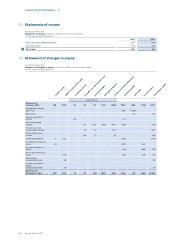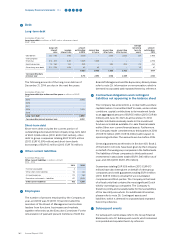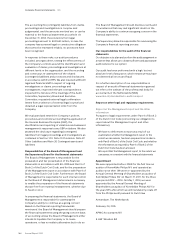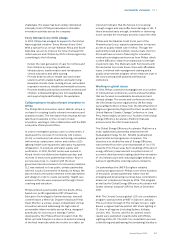Philips 2014 Annual Report Download - page 188
Download and view the complete annual report
Please find page 188 of the 2014 Philips annual report below. You can navigate through the pages in the report by either clicking on the pages listed below, or by using the keyword search tool below to find specific information within the annual report.
Sustainability statements 14
188 Annual Report 2014
Reporting standards
In this report, we have followed relevant best practice
standards and international guidelines; the IIRC
Integrated Reporting <IR> framework and the Global
Reporting Initiative’s (GRI) G4 Sustainability Reporting
Guidelines.
Sustainability is integrated in our company strategy and
embedded in the organization. We have developed a
value creation model (section 4.2, How we create
value, of this Annual Report), including the six capitals,
in line with the <IR> framework. A detailed overview of
the G4 Comprehensive Indicators is provided at the end
of this section.
We signed on to the United Nations Global Compact in
March 2007, joining thousands of companies from all
regions of the world as well as international labor and
civil society organizations to advance 10 universal
principles in the areas of human rights, labor, the
environment and anti-corruption. Our General Business
Principles, Sustainability and Environmental Policies,
and our Supplier Sustainability Declaration are the
cornerstones that enable us to live up to the standards
set by the Global Compact. This is closely monitored
and reported, as illustrated throughout this report,
which is also our annual Communication on Progress
(COP) submitted to the UN Global Compact Oce.
Material aspects and our focus
We identify the environmental, social, and governance
aspects which have the greatest impact on our business
and the greatest level of concern to stakeholders along
our value chain. These direct or indirect aspects may
represent opportunities and risks and inuence our
ability to create, preserve or erode economic,
environmental and social value for our stakeholders
and Philips. Assessing these aspects enables us to
prioritize and focus upon the most material issues and
eectively address these in our policies and programs
as well as measure and understand their implications in
nancial and non-nancial terms.
Our materiality assessment is based on an ongoing
trend analysis, media search, and stakeholder input. In
2014, we have broadened our approach by asking a
large group of stakeholders (incl. customers, suppliers,
investors and NGOs) to evaluate the materiality of a
long-list of aspects. The results are reected on the
vertical axis of the materiality matrix. The scores on the
horizontal axis are based on Philips’ assessment. Our
materiality assessment has been conducted in the
context of the GRI G4 Reporting Framework and the
results have been reviewed and approved by the Philips
Sustainability Board.
The results of this analysis are given in the matrix below
and the key material aspects as well as the links to the
relevant sections in this report are provided as well.
Importance to
Stakeholders
Business impact
high
medium
low medium high
Economic
downturn and
restructuring Big Data
and privacy
Resource
scarcity
Responsible
tax policy
Living
wage
Stakeholder activism
and transparency
Bio-
diversity Conict
minerals
Water
scarcity
Geo-political
issues
Energy
security
Circular
economy
Partnerships and
co-creation
Expanding middle
class in growth
geographies
Employee health
and safety
Responsible
supply chains
Product responsibility
and regulation
Urbanization
Metrics beyond
nancials
Rising healthcare
costs
Business ethics and
General Business
Principles
Energy
eciency
Healthy
living
Diversity
Pollution
Climate
change
Aging
population
Chronic and lifestyle-
related diseases
Environmental topics Social topics Governance topics
























